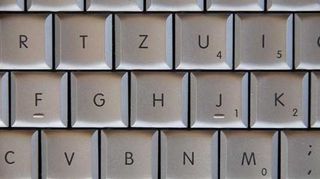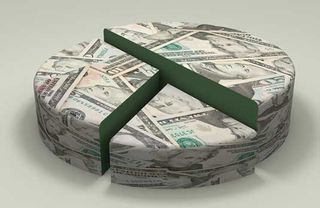Write that killer proposal - 5 essential tips
When your design client asks for a written proposal, how do you go about it? We explain what to do.

You’ve delivered your design pitch and now the client has requested a written proposal. So how go about writing up your intentions?
Of course, there are some who think that any client that asks for a written proposal is a client not worth having in the first place - such as Brian Pullen, who explains why in this article. But you're keen to go ahead, here’s some advice on how to plan and structure a successful proposal that will keep your client happy without causing issues over the long term...
01. Do your research
The first thing to remember when preparing a proposal is that you are attempting to show the client you understand their challenges and needs, and can provide a creative, yet practical solution to that – with the end goal, of course, being to win their business.
So before you get carried away in excitement with grand ideas, examine the situation from the client’s perspective. Ask yourself: what are they really asking for help with? And why should they choose you over other agencies that might be pitching for the contract?
It’s also a good idea to try and find out who the client has awarded contracts to previously and how they like to work, so that you can create a solution that is specifically tailored to your clients’ needs.
02. Think long-term
It’s important that your proposal is much more than a bullet-point list of information and financials. Set aside time to think strategically about your solution - how will it benefit the client in two or maybe five years from now?
Have you created a solution that that is workable from the off or do they need instruction and training about how to manage the project when you hand it over?
Get the Creative Bloq Newsletter
Daily design news, reviews, how-tos and more, as picked by the editors.
Demonstrating that you have a vision for the company and are thinking more long-term than simply giving you or your agency a quick-win is likely to build trust and establish a strong relationship between you and the client.
03. Don't rush things
You may be desperate to wing your proposal out the door but it’s important to remember that creating any really great piece of work takes time. So don’t promise the client that you’ll deliver your proposal in an unrealistic timeframe. Instead set aside a good few hours to craft something that is both effective and resonates with the client.
This is also true of the project itself. Make sure that you include realistic timelines for the project’s completion, as well as what you might need from the client to make sure you hit that deadline.
04. Budgets

Include costings within the document is important but be realistic. Pricing the project too high will scare the client off but too low, and you undervalue the work you’re offering.
Illustrate why you have arrived at the final cost by outlining all of the services/work you intend to provide between the project start and completion date and breaking down the cost as appropriate. This will also act as a firm service level agreement should the client choose to go with you.
05. Get your facts straight
It's vital to ensure that all of the information, facts and costings are correct. That might sound obvious but not everyone follows this advice in practice!
If you’re using an existing template to write your proposal, you need to quadruple-check that all the references are to the correct client and that you've swapped over all the logos, etc that you need to. Meticulous grammar and spelling are also essential, so get someone to cast a fresh pair of eyes on it before you hit the send button.
However accurate you think you've been, it's very difficult to spot your own mistakes - your brain can play tricks on you there, so a second reas is essential.
To summarise, here’s a quick outline of how you should structure your proposal:
- Summary - Outline the challenges the client faces and the solution you offer
- The project - Describe what the project will entail, exactly how this will be achieved, and by whom.
- Budgets - Detail exact costings for all parts of the project, as well as the final cost.
- Conclusion and next steps - Summarise your projections for the completed project, and don’t forget to include details of who to contact and when.
Words: Natalie Brandweiner
Natalie Brandweiner is an online journalist for MyCustomer.com, covering social media and marketing, and has a keen interest in design.

Thank you for reading 5 articles this month* Join now for unlimited access
Enjoy your first month for just £1 / $1 / €1
*Read 5 free articles per month without a subscription

Join now for unlimited access
Try first month for just £1 / $1 / €1
The Creative Bloq team is made up of a group of design fans, and has changed and evolved since Creative Bloq began back in 2012. The current website team consists of eight full-time members of staff: Editor Georgia Coggan, Deputy Editor Rosie Hilder, Ecommerce Editor Beren Neale, Senior News Editor Daniel Piper, Editor, Digital Art and 3D Ian Dean, Tech Reviews Editor Erlingur Einarsson and Ecommerce Writer Beth Nicholls and Staff Writer Natalie Fear, as well as a roster of freelancers from around the world. The 3D World and ImagineFX magazine teams also pitch in, ensuring that content from 3D World and ImagineFX is represented on Creative Bloq.
